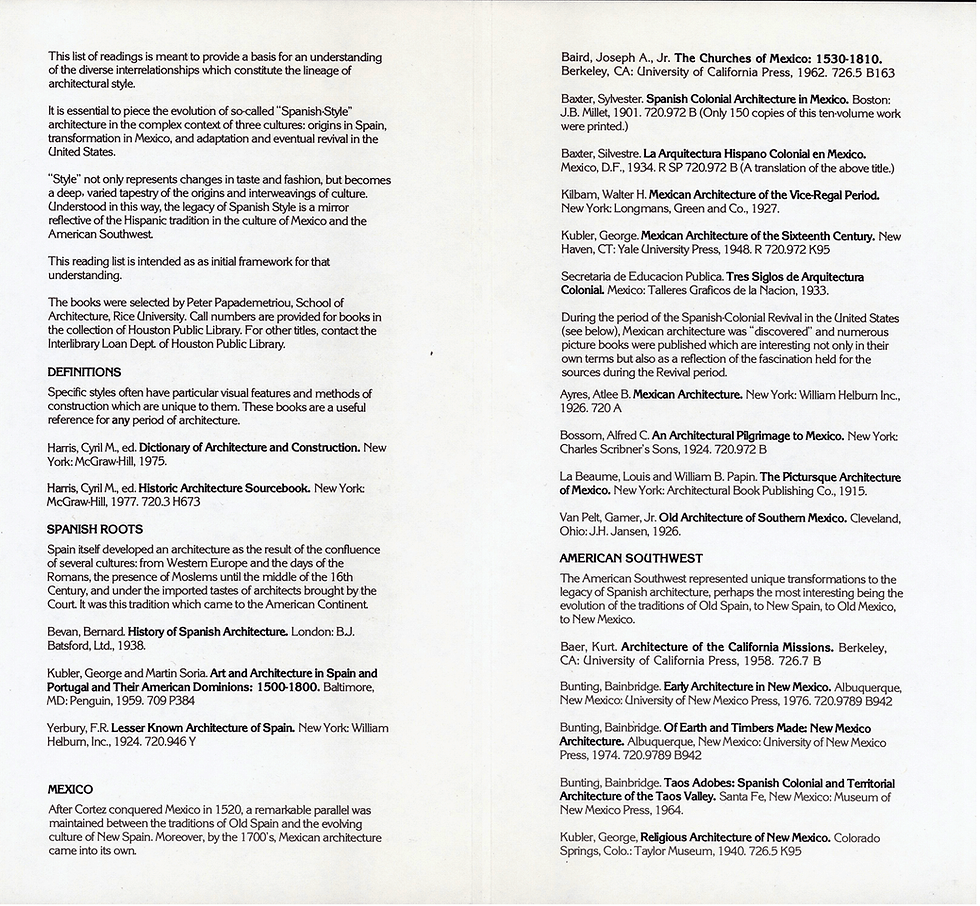EXHIBITION 4 - Public Education
The Houston Public Library sponsored a series of Programs and small publications on a range of themes, reaching a broad demographic..
These were both to raise awareness in the community, and advance consideration of the City as it was redefining itself. We were so bold as to posit 'Signs' as part of the urban landscape, and suggest that Houston had celebrated an Hispannic heritage.(refer also to EXHIBITION 2 - Women in American Architecture, using the venue, but seperately organized.)
'CLICK' on images for Caption and to review in Sequence.




The "SIGNS OF HOUSTON" project was promoted by the Library with posters announcing the CITY Project.

Also, an extensive mailing of postcards to Library Patrons included my collaborative work with photographer Paul Hester.

The final component was a Book in which I wrote an Essay, "Icons and Eye-Cons", with extensive Captions paralleling Paul Hester's photographs.

A major acquisition of 'lost' archival papers to the Architectural Archives resulted in a major series of events. AC Finn was the architect of the Gulf (Oil) Building, marking Houston as a home for the petroleum industry, and one of the first "skyscrapers".

Public lectures were part of the program making the general public aware of the legacy and its importance to the culture of the 1920s +.

A publication was made to put the architect in contxt.


Acknowledges my role in the acquisition.

The review in CITE describes my role in the discovery and accession.

This Program was directed to explain the position of Spanish Colonial architecture as a 'style' seen as a Regional context, environmentally, symbolically and culturally. The Julia Ideson Building (the original Central Library) was itself in the style.

Library Patrons were made aware of Programs explaining the raison d'etre behind the initiative.

I participated in several "outreach" events at branch libraries, particularly in Hispanic/Chicano neighborhoods.

Directing Patrons to holdings within the Library was the purpose of a select bibliography.


The program also produced a (free) publication ["click" to read].

To further make the Public aware of this Hispanic Heritage, we produced a list of existing examples.

A location map illustrated the diversity of locations.

Harwin Moore was the father of another Architect, Barry Moore, who was one of the "Young Guard" on the AIA Guidebook Committee (see Review in PUBLISHED WRITINGS 5), which includes his Review of same, 30 years later in CITE 2012.

The HOUSTON CHRONICLE promoted the significance of the exhibit.





